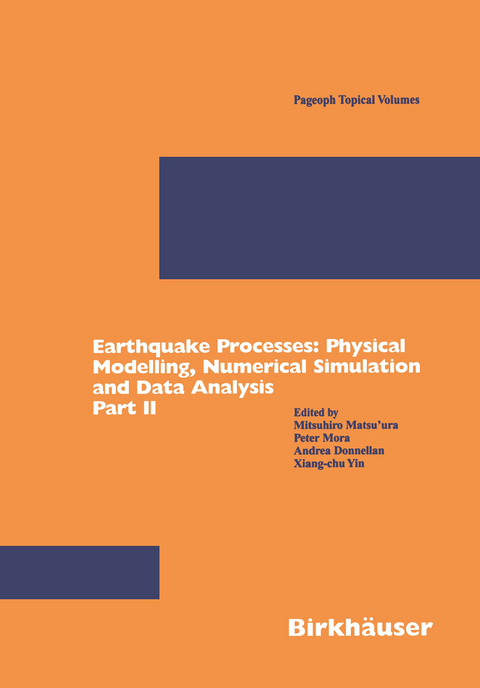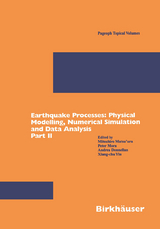Earthquake Processes: Physical Modelling, Numerical Simulation and Data Analysis Part II
A. Earthquake Cycles, Crustal Deformation and Plate Dynamics.- 3-D Simulation of Earthquake Generation Cycles and Evolution of Fault Constitutive Properties.- Interplate Earthquake Fault Slip During Periodic Earthquake Cycles in a Viscoelastic Medium at a Subduction Zone.- Development of a Finite Element Simulator for Crustal Deformation with Large Fault Slipping.- 3-D Viscoelastic FEM Modeling of Crustal Deformation in Northeast Japan.- Combined GPS and InSAR Models of Postseismic Deformation from the Northridge Earthquake.- A Hidden Markov Model Based Tool for Geophysical Data Exploration.- Geophysical Applications of Multidimensional Filtering with Wavelets.- Large Amplitude Folding in Finely Layered Viscoelastic Rock Structures.- Mantle Convection Modeling with Viscoelastic/Brittle Lithosphere: Numerical Methodology and Plate Tectonic Modeling.- GEM Plate Boundary Simulations for the Plate Boundary Observatory: A Program for Understanding the Physics of Earthquakes on Complex Fault Networks via Observations, Theory and Numerical Simulation.- B. Seismicity Change and its Physical Interpretation.- Accelerated Seismic Release and Related Aspects of Seismicity Patterns on Earthquake Faults.- Stress Correlation Function Evolution in Lattice Solid Elasto-dynamic Models of Shear and Fracture Zones and Earthquake Prediction.- Pattern Dynamics and Forecast Methods in Seismically Active Regions.- Long-range Automaton Models of Earthquakes: Power-law Accelerations, Correlation Evolution, and Mode-switching.- Critical Sensitivity and Trans-scale Fluctuations in Catastrophic Rupture.- Load-Unload Response Ratio and Accelerating Moment/Energy Release Critical Region Scaling and Earthquake Prediction.- Simulation of the Load-Unload Response Ratio and Critical Sensitivity inthe Lattice Solid Model.
| Erscheint lt. Verlag | 26.9.2002 |
|---|---|
| Reihe/Serie | Pageoph Topical Volumes |
| Zusatzinfo | IV, 367 p. 195 illus., 39 illus. in color. |
| Verlagsort | Basel |
| Sprache | englisch |
| Gewicht | 722 g |
| Themenwelt | Naturwissenschaften ► Geowissenschaften ► Geologie |
| Naturwissenschaften ► Geowissenschaften ► Geophysik | |
| Schlagworte | Data Analysis • Earthquake • Earthquake Prediction • Fault • fault zone • Fracture • Modelling • numerical simulation • Seismic • subduction |
| ISBN-13 | 9783764369163 / 9783764369163 |
| Zustand | Neuware |
| Informationen gemäß Produktsicherheitsverordnung (GPSR) | |
| Haben Sie eine Frage zum Produkt? |
aus dem Bereich




